Yannig Goude
EDF R&D
Towards Accurate Forecasting of Renewable Energy : Building Datasets and Benchmarking Machine Learning Models for Solar and Wind Power in France
Apr 14, 2025Abstract:Accurate prediction of non-dispatchable renewable energy sources is essential for grid stability and price prediction. Regional power supply forecasts are usually indirect through a bottom-up approach of plant-level forecasts, incorporate lagged power values, and do not use the potential of spatially resolved data. This study presents a comprehensive methodology for predicting solar and wind power production at country scale in France using machine learning models trained with spatially explicit weather data combined with spatial information about production sites capacity. A dataset is built spanning from 2012 to 2023, using daily power production data from RTE (the national grid operator) as the target variable, with daily weather data from ERA5, production sites capacity and location, and electricity prices as input features. Three modeling approaches are explored to handle spatially resolved weather data: spatial averaging over the country, dimension reduction through principal component analysis, and a computer vision architecture to exploit complex spatial relationships. The study benchmarks state-of-the-art machine learning models as well as hyperparameter tuning approaches based on cross-validation methods on daily power production data. Results indicate that cross-validation tailored to time series is best suited to reach low error. We found that neural networks tend to outperform traditional tree-based models, which face challenges in extrapolation due to the increasing renewable capacity over time. Model performance ranges from 4% to 10% in nRMSE for midterm horizon, achieving similar error metrics to local models established at a single-plant level, highlighting the potential of these methods for regional power supply forecasting.
Conformal Prediction for Hierarchical Data
Nov 20, 2024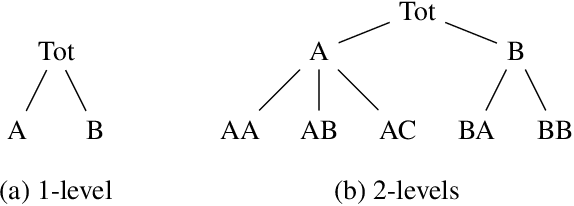
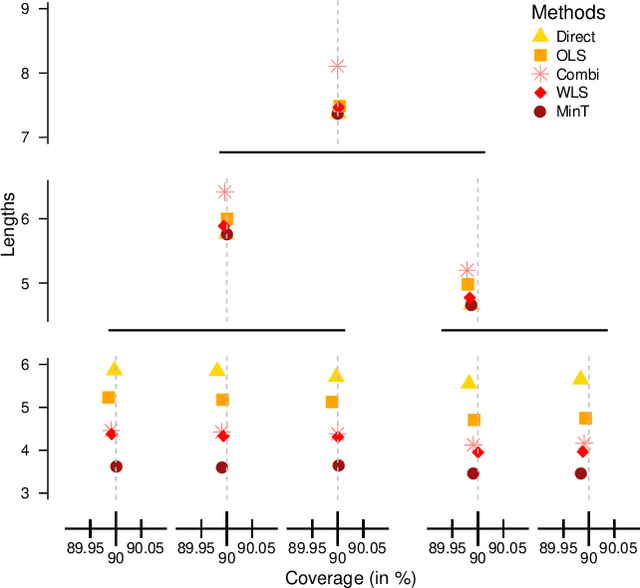
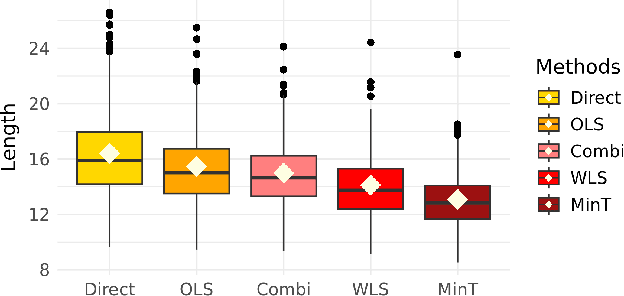
Abstract:Reconciliation has become an essential tool in multivariate point forecasting for hierarchical time series. However, there is still a lack of understanding of the theoretical properties of probabilistic Forecast Reconciliation techniques. Meanwhile, Conformal Prediction is a general framework with growing appeal that provides prediction sets with probabilistic guarantees in finite sample. In this paper, we propose a first step towards combining Conformal Prediction and Forecast Reconciliation by analyzing how including a reconciliation step in the Split Conformal Prediction (SCP) procedure enhances the resulting prediction sets. In particular, we show that the validity granted by SCP remains while improving the efficiency of the prediction sets. We also advocate a variation of the theoretical procedure for practical use. Finally, we illustrate these results with simulations.
Leveraging Graph Neural Networks to Forecast Electricity Consumption
Aug 30, 2024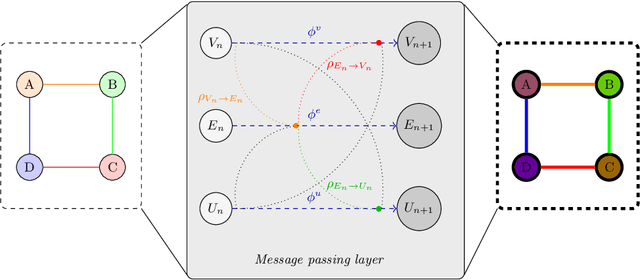
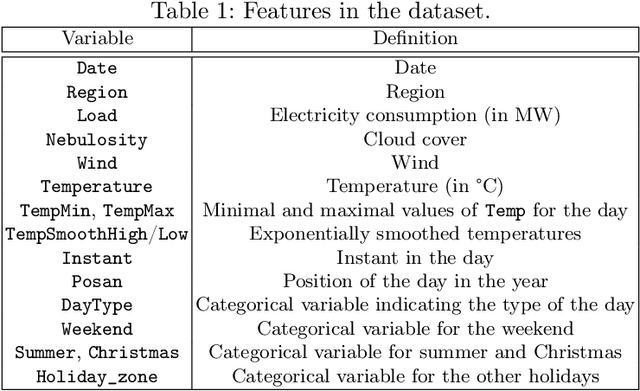
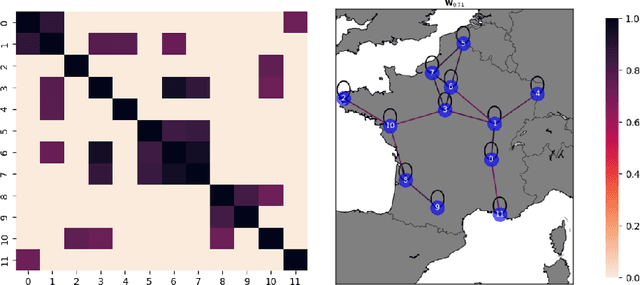
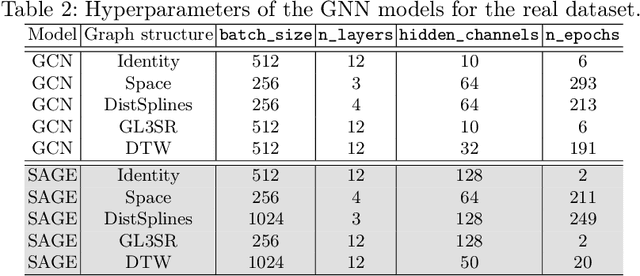
Abstract:Accurate electricity demand forecasting is essential for several reasons, especially as the integration of renewable energy sources and the transition to a decentralized network paradigm introduce greater complexity and uncertainty. The proposed methodology leverages graph-based representations to effectively capture the spatial distribution and relational intricacies inherent in this decentralized network structure. This research work offers a novel approach that extends beyond the conventional Generalized Additive Model framework by considering models like Graph Convolutional Networks or Graph SAGE. These graph-based models enable the incorporation of various levels of interconnectedness and information sharing among nodes, where each node corresponds to the combined load (i.e. consumption) of a subset of consumers (e.g. the regions of a country). More specifically, we introduce a range of methods for inferring graphs tailored to consumption forecasting, along with a framework for evaluating the developed models in terms of both performance and explainability. We conduct experiments on electricity forecasting, in both a synthetic and a real framework considering the French mainland regions, and the performance and merits of our approach are discussed.
Forecasting Electric Vehicle Charging Station Occupancy: Smarter Mobility Data Challenge
Jun 09, 2023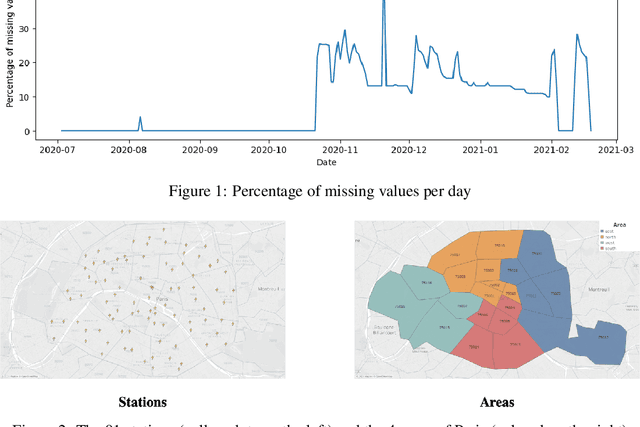


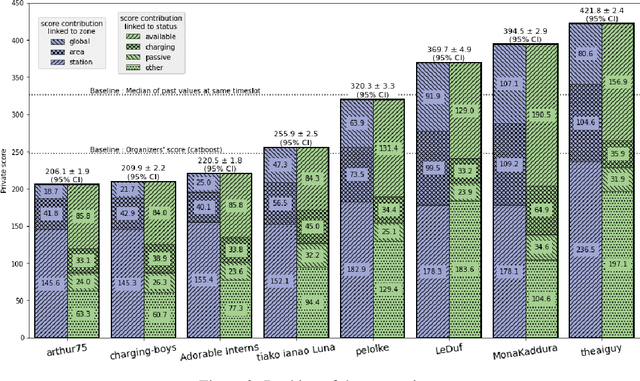
Abstract:The transport sector is a major contributor to greenhouse gas emissions in Europe. Shifting to electric vehicles (EVs) powered by a low-carbon energy mix would reduce carbon emissions. However, to support the development of electric mobility, a better understanding of EV charging behaviours and more accurate forecasting models are needed. To fill that gap, the Smarter Mobility Data Challenge has focused on the development of forecasting models to predict EV charging station occupancy. This challenge involved analysing a dataset of 91 charging stations across four geographical areas over seven months in 2020-2021. The forecasts were evaluated at three levels of aggregation (individual stations, areas and global) to capture the inherent hierarchical structure of the data. The results highlight the potential of hierarchical forecasting approaches to accurately predict EV charging station occupancy, providing valuable insights for energy providers and EV users alike. This open dataset addresses many real-world challenges associated with time series, such as missing values, non-stationarity and spatio-temporal correlations. Access to the dataset, code and benchmarks are available at https://gitlab.com/smarter-mobility-data-challenge/tutorials to foster future research.
Adaptive Probabilistic Forecasting of Electricity (Net-)Load
Jan 24, 2023Abstract:We focus on electricity load forecasting under three important specificities. First, our setting is adaptive; we use models taking into account the most recent observations available, yielding a forecasting strategy able to automatically respond to regime changes. Second, we consider probabilistic rather than point forecasting; indeed, uncertainty quantification is required to operate electricity systems efficiently and reliably. Third, we consider both conventional load (consumption only) and netload (consumption less embedded generation). Our methodology relies on the Kalman filter, previously used successfully for adaptive point load forecasting. The probabilistic forecasts are obtained by quantile regressions on the residuals of the point forecasting model. We achieve adaptive quantile regressions using the online gradient descent; we avoid the choice of the gradient step size considering multiple learning rates and aggregation of experts. We apply the method to two data sets: the regional net-load in Great Britain and the demand of seven large cities in the United States. Adaptive procedures improve forecast performance substantially in both use cases and for both point and probabilistic forecasting.
Adaptive Conformal Predictions for Time Series
Feb 15, 2022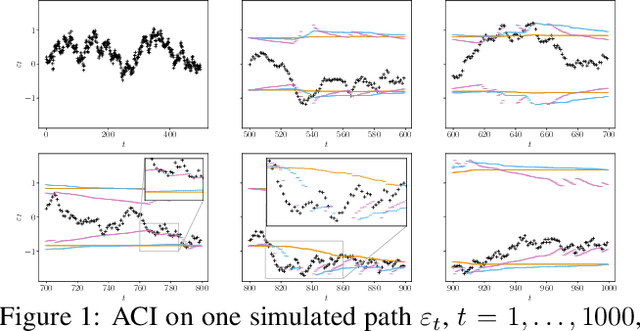

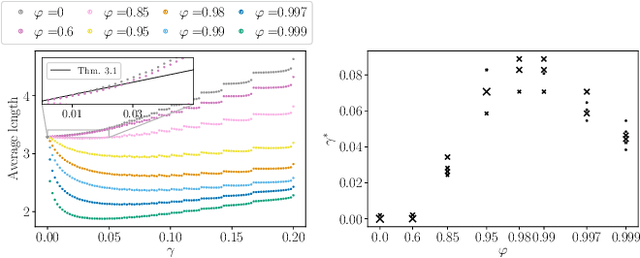
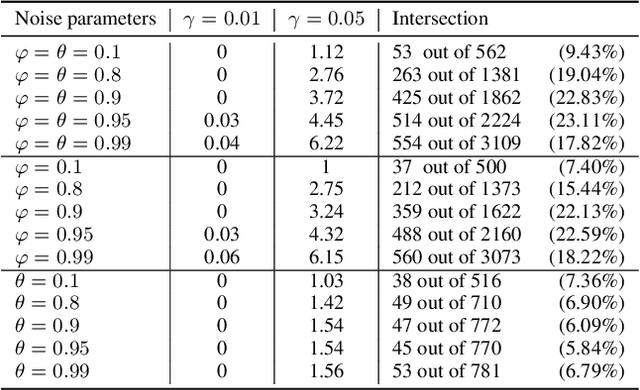
Abstract:Uncertainty quantification of predictive models is crucial in decision-making problems. Conformal prediction is a general and theoretically sound answer. However, it requires exchangeable data, excluding time series. While recent works tackled this issue, we argue that Adaptive Conformal Inference (ACI, Gibbs and Cand{\`e}s, 2021), developed for distribution-shift time series, is a good procedure for time series with general dependency. We theoretically analyse the impact of the learning rate on its efficiency in the exchangeable and auto-regressive case. We propose a parameter-free method, AgACI, that adaptively builds upon ACI based on online expert aggregation. We lead extensive fair simulations against competing methods that advocate for ACI's use in time series. We conduct a real case study: electricity price forecasting. The proposed aggregation algorithm provides efficient prediction intervals for day-ahead forecasting. All the code and data to reproduce the experiments is made available.
Daily peak electrical load forecasting with a multi-resolution approach
Dec 08, 2021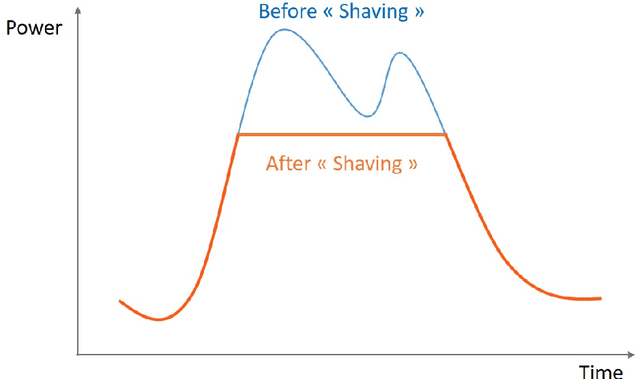
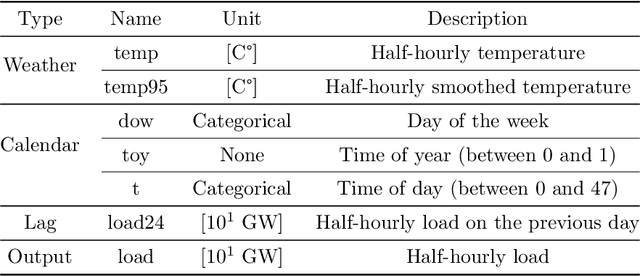
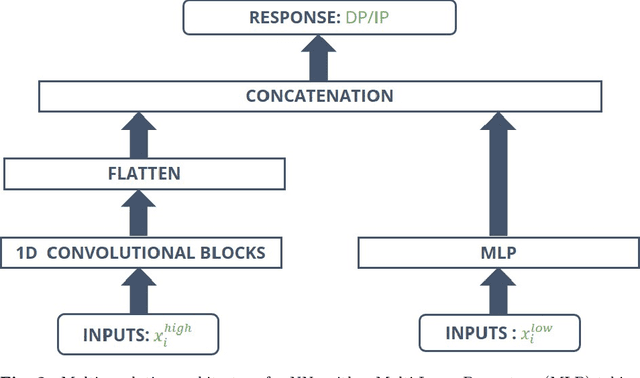
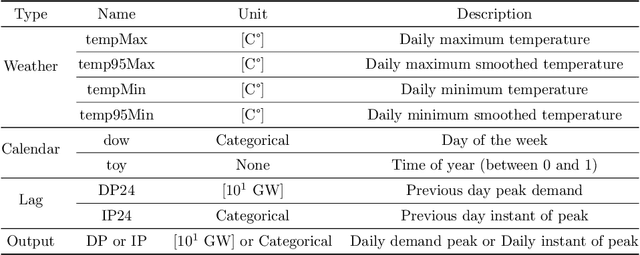
Abstract:In the context of smart grids and load balancing, daily peak load forecasting has become a critical activity for stakeholders of the energy industry. An understanding of peak magnitude and timing is paramount for the implementation of smart grid strategies such as peak shaving. The modelling approach proposed in this paper leverages high-resolution and low-resolution information to forecast daily peak demand size and timing. The resulting multi-resolution modelling framework can be adapted to different model classes. The key contributions of this paper are a) a general and formal introduction to the multi-resolution modelling approach, b) a discussion on modelling approaches at different resolutions implemented via Generalised Additive Models and Neural Networks and c) experimental results on real data from the UK electricity market. The results confirm that the predictive performance of the proposed modelling approach is competitive with that of low- and high-resolution alternatives.
Hierarchical transfer learning with applications for electricity load forecasting
Nov 19, 2021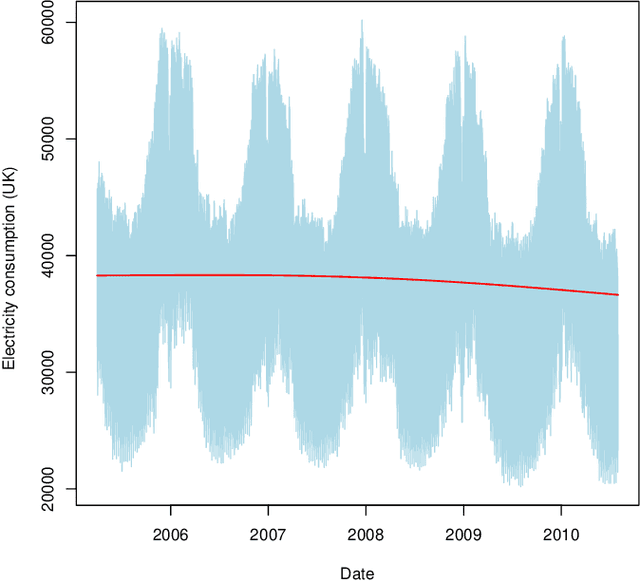

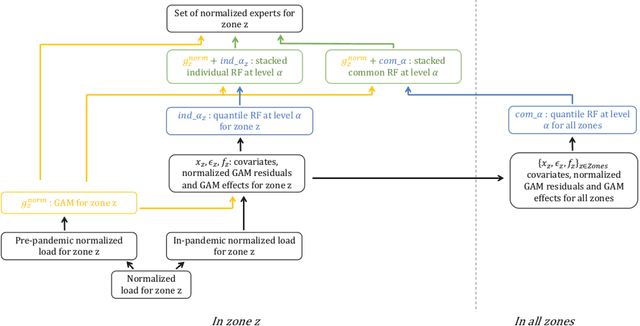

Abstract:The recent abundance of data on electricity consumption at different scales opens new challenges and highlights the need for new techniques to leverage information present at finer scales in order to improve forecasts at wider scales. In this work, we take advantage of the similarity between this hierarchical prediction problem and multi-scale transfer learning. We develop two methods for hierarchical transfer learning, based respectively on the stacking of generalized additive models and random forests, and on the use of aggregation of experts. We apply these methods to two problems of electricity load forecasting at national scale, using smart meter data in the first case, and regional data in the second case. For these two usecases, we compare the performances of our methods to that of benchmark algorithms, and we investigate their behaviour using variable importance analysis. Our results demonstrate the interest of both methods, which lead to a significant improvement of the predictions.
State-Space Models Win the IEEE DataPort Competition on Post-covid Day-ahead Electricity Load Forecasting
Oct 01, 2021

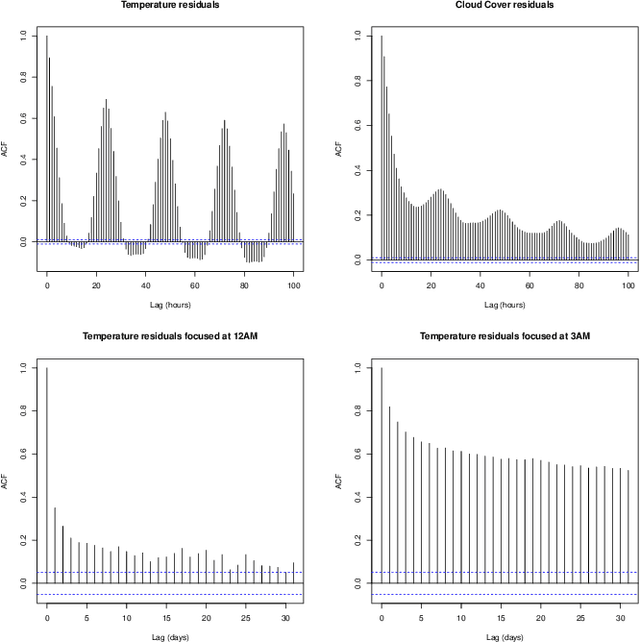

Abstract:We present the winning strategy of an electricity demand forecasting competition. This competition was organized to design new forecasting methods for unstable periods such as the one starting in Spring 2020. We rely on state-space models to adapt standard statistical and machine learning models. We claim that it achieves the right compromise between two extremes. On the one hand, purely time-series models such as autoregressives are adaptive in essence but fail to capture dependence to exogenous variables. On the other hand, machine learning methods allow to learn complex dependence to explanatory variables on a historical data set but fail to forecast non-stationary data accurately. The evaluation period of the competition was the occasion of trial and error and we put the focus on the final forecasting procedure. In particular, it was at the same time that a recent algorithm was designed to adapt the variances of a state-space model and we present the results of the final version only. We discuss day-today predictions nonetheless.
Transfer Learning for Linear Regression: a Statistical Test of Gain
Feb 18, 2021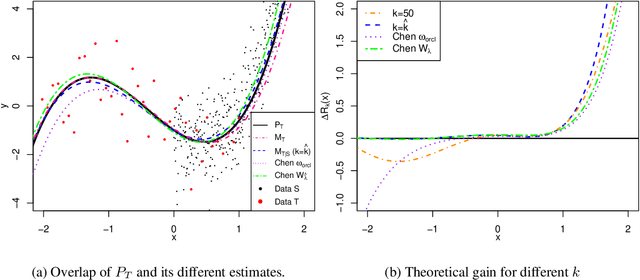
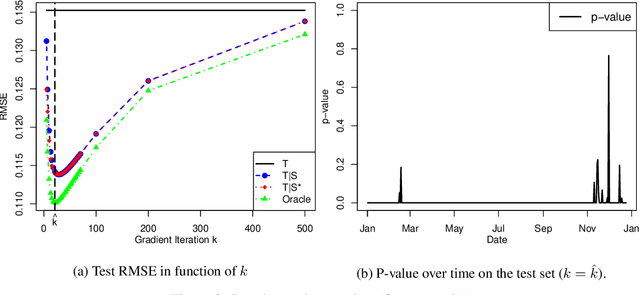
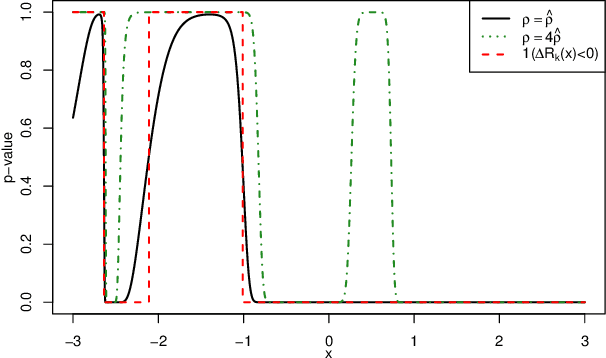
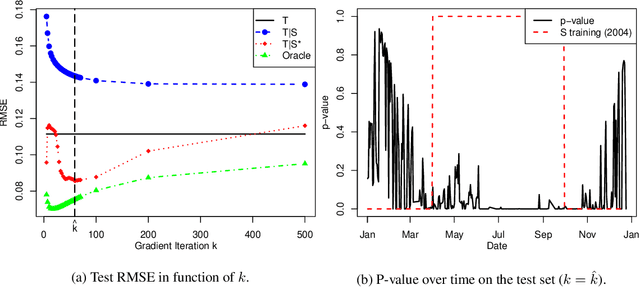
Abstract:Transfer learning, also referred as knowledge transfer, aims at reusing knowledge from a source dataset to a similar target one. While many empirical studies illustrate the benefits of transfer learning, few theoretical results are established especially for regression problems. In this paper a theoretical framework for the problem of parameter transfer for the linear model is proposed. It is shown that the quality of transfer for a new input vector $x$ depends on its representation in an eigenbasis involving the parameters of the problem. Furthermore a statistical test is constructed to predict whether a fine-tuned model has a lower prediction quadratic risk than the base target model for an unobserved sample. Efficiency of the test is illustrated on synthetic data as well as real electricity consumption data.
 Add to Chrome
Add to Chrome Add to Firefox
Add to Firefox Add to Edge
Add to Edge